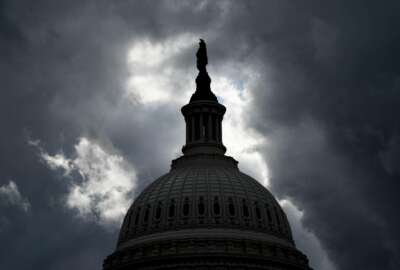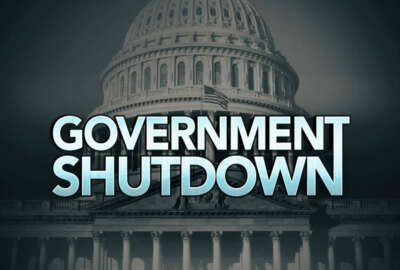
Practice makes perfect: Contractors better prepared for real or potential shutdown
Alan Chvotkin, the senior counsel and vice president of the Professional Services Council, said vendors are tired of facing the budget Yo-Yo over the late decade.
Best listening experience is on Chrome, Firefox or Safari. Subscribe to Federal Drive’s daily audio interviews on Apple Podcasts or PodcastOne.
Federal contractors are getting used to this shutdown dance by now.
With Congress and the White House seemingly closing in on a short term continuing resolution to fund the seven remaining appropriations bills at fiscal 2018 levels until Feb. 8, vendors are in limbo about what will happen to them and their contracts.
 Unfortunately for industry, this limbo is nothing new. The impending partial shutdown would be the third one this year. Congress and the White House closed the government from Saturday, Jan. 20, to Monday evening, Jan. 22, and then again on Feb. 9 for about nine hours.
Unfortunately for industry, this limbo is nothing new. The impending partial shutdown would be the third one this year. Congress and the White House closed the government from Saturday, Jan. 20, to Monday evening, Jan. 22, and then again on Feb. 9 for about nine hours.
“There is a tiredness from our members in preparing for and dealing with the shutdowns,” said Alan Chvotkin, the senior counsel and vice president of the Professional Services Council, an industry association. “How many times can you say be careful we might have a problem?”
PSC, and other industry associations, are better prepared to educate and work with their members ever since the 2013 shutdown.
PSC, for example, keeps a shutdown resource web page updated and available. The Coalition for Government Procurement posted a shutdown checklist for contracts back in 2015, which remains accessible today.
Impact of shutdown more local
Chvotkin said what’s different this time would be the fact that the departments of Defense, Veterans Affairs and Health and Human Services have funding for 2019 so the impact on partial shutdown would be more localized across the country.
“A partial shutdown would have a huge impact on smaller agencies, and that’s where you have less industry concentrated in the Washington, D.C. area,” he said. “These tend to be smaller contracts and tend to be more localized where contractors are supporting the regional offices of say an EPA or Interior or Forest Service. There still quite a lot of federal employees and contractors at risk in those agencies. We have members tell us that their customer’s behaviors become very localized. Individual contracts in individual agencies tend to act first by issuing a stop work order and then figure out how to proceed. That tends to hit small companies harder because the government tends to be larger part of their revenue as compared to larger contractors.”
Chvotkin said whether or not there is a partial shutdown starting Saturday morning, there are plenty of lessons learned from previous ones that vendors should consistently keep in mind.
The first, and probably most important one, vendors should communicate early and often with their agency customers about the status of the contract. How is it funded? No year money? One-year money?
Is the contract considered essential to national security or the agency’s mission and would be exempt from a shutdown?
“Very few government officials feel as if they can say something about the status of a contract or program. They don’t want to predict a shutdown and don’t know if one will happen so they are reluctant to comment,” he said. “It’s hard to get information out of agencies in days leading up to risk of shutdown.”
Asking OMB for more communications
This is why PSC sent a white paper to the Office of Management and Budget in October asking for specific changes to help increase transparency and communications in the face of a lapse in funding.
“We’ve talked to OMB recently about the importance of decision making when it comes to contracts,” Chvotkin said. “The white paper includes steps OMB could take in that transparency vain to share with agencies so they can say which contracts might be at risk and which ones not at risk in case of a shutdown. This would address a lot of angst from our members.”
Related Stories

How to prepare for the unknown: a contractor’s guide to government shutdown planning

4 things for contractors to remember in planning for a possible government shutdown
The white paper outlined seven benefits to contractors and government including preventing wasted time and resources sorting out who should work and who should not and the importance information flow down to subcontractors.
Another big lesson learned over the years is vendors are more prepared to keep employees engaged through training courses rather than furloughs, which impacts both the company and the government.
A final big change for industry and government is the move to firm fixed price contracts rather than labor hours or time and materials. Chvotkin said with more agencies using firm fixed price contracts, the impact of a shutdown has been diminished to a certain extent.
“The script is pretty well written for agencies and contractors when it comes to preparing for shutdowns,” he said. “The thing for us is constant communications from agencies.”
Copyright © 2025 Federal News Network. All rights reserved. This website is not intended for users located within the European Economic Area.
Jason Miller is executive editor of Federal News Network and directs news coverage on the people, policy and programs of the federal government.
Follow @jmillerWFED




